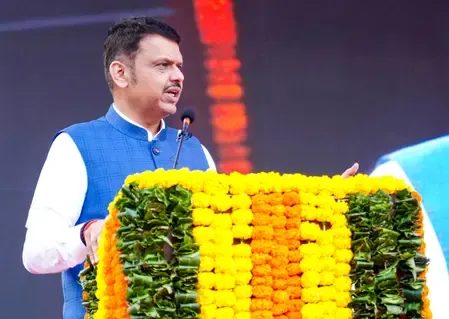Should the Maha Government Mandate 1% of Budget for Road Safety?

Synopsis
Key Takeaways
- 1% of annual budget must be allocated for road safety.
- 14 specific directives for urban local bodies.
- Installation of tactile paving at public transport hubs.
- Regular footpath audits every six months.
- Online grievance portal for reporting issues.
Mumbai, November 10 (NationPress) In response to the alarming increase in fatalities due to road accidents, the Maharashtra government has mandated that all municipal corporations, including those in Mumbai, Pune, Nagpur, Nashik, and Chhatrapati Sambhajinagar, allocate a minimum of one percent of their annual budget toward road safety, traffic discipline, and public awareness initiatives. This directive aligns with the Supreme Court's guidelines aimed at enhancing pedestrian safety.
The State Urban Development Department has issued a formal government resolution addressing this crucial issue.
This resolution stems from the Supreme Court's ruling in a public interest litigation presented by S. Rajasekaran concerning pedestrian safety.
The directive compels each civic body to create a distinct budgetary category dedicated to this initiative and ensure that the allocated funds are strictly utilized for measures related to road and pedestrian safety.
The resolution outlines 14 specific directives for all urban local bodies.
Notably, one of the measures includes the installation of tactile paving at significant public transport hubs—such as bus stations, metro, and railway stations—to enhance accessibility for individuals with visual impairments.
Civic bodies are instructed to collaborate with the traffic department to enhance pedestrian access and provide seamless entry, waiting areas, and tactile routes.
Furthermore, municipal corporations must conduct thorough footpath audits biannually through certified auditing agencies, focusing on high-traffic areas like markets, schools, colleges, transport terminals, and tourist attractions.
The audit findings, along with a timeline for necessary repairs, must be submitted to the Urban Development Department, as stated in the government resolution.
The state government has urged all civic bodies to eliminate encroachments on footpaths and pedestrian pathways, ensure adequate lighting, maintain cleanliness, and install CCTV surveillance on pedestrian bridges and subways. They must also guarantee that zebra crossings adhere to the standards set by the Indian Roads Congress and the Ministry of Housing and Urban Affairs.
Each municipal corporation will establish a dedicated 'Accessibility and Pedestrian Cell' to oversee planning, implementation, maintenance, and grievance resolution.
In collaboration with the police, accident-prone areas must be identified, with safety personnel deployed where needed, as indicated in the government resolution.
The state government has directed civic bodies to ensure that at least 20 percent of city roads undergo annual surveys to evaluate the necessity for new pedestrian crossings. Additionally, non-motorized transportation options—such as biking and walking—should be encouraged through proper regulations under the Motor Vehicles Act.
All municipal corporations are required to set up an online grievance portal for reporting encroachments, damaged pavements, or pedestrian facilities, with a mandatory resolution timeframe of 15 days.
The state government has emphasized strict adherence to the government resolution, warning civic bodies against any violations of the Supreme Court's directives.








